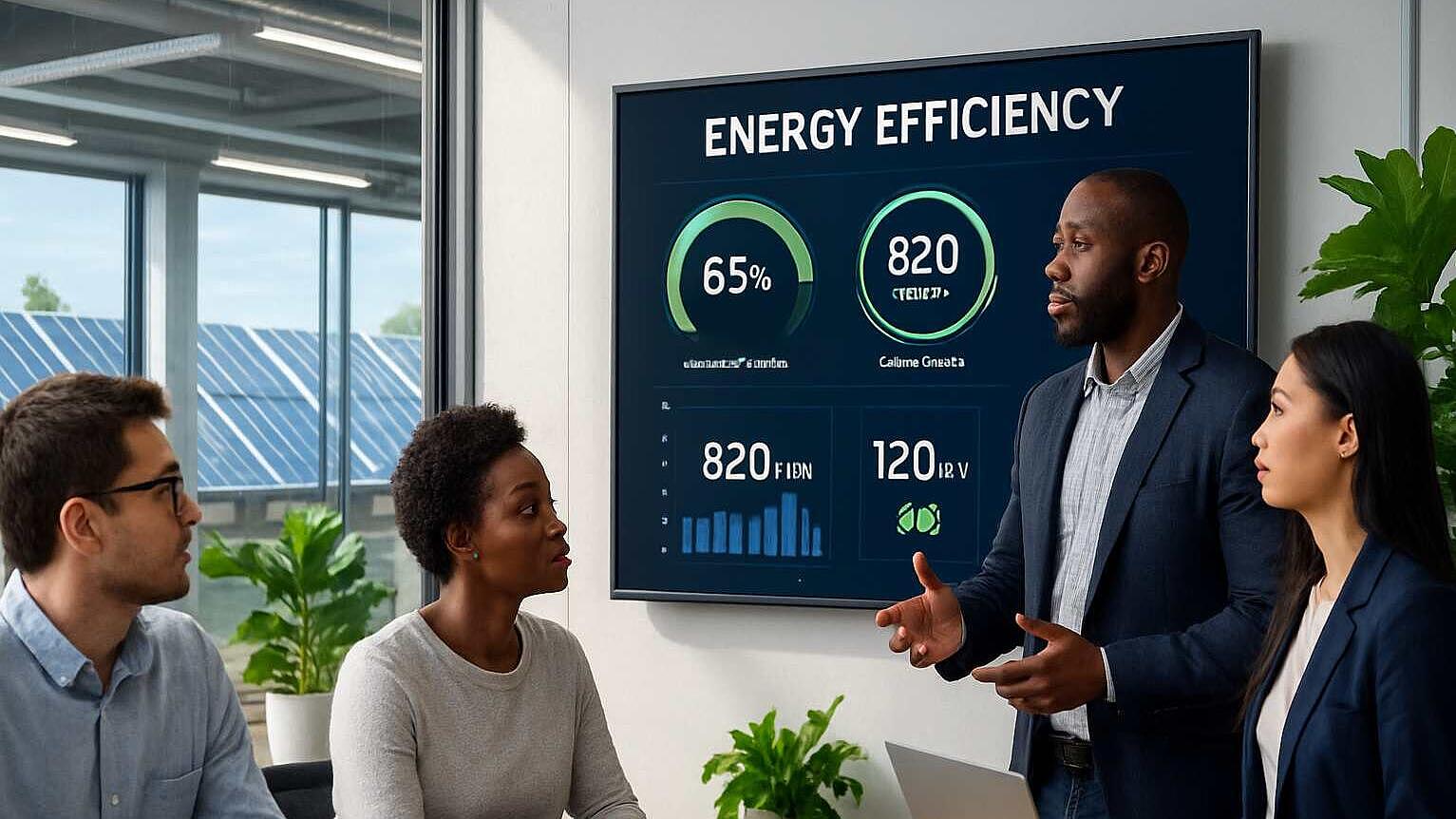 Energy Efficiency
Energy EfficiencyUnlocking Competitive Advantage: The Overlooked Multiple Benefits of Energy Efficiency in Business
Summary
The paper discusses the underestimated value of energy efficiency in business operations beyond its commonly perceived benefits of cost saving and carbon emissions reduction. It underscores that energy efficiency can yield numerous non-energy benefits (NEBs), such as improved product quality and worker satisfaction, which are frequently overlooked due to challenges in quantification and visibility to decision-makers. Consequently, many businesses miss opportunities for strategic gains because NEBs are not factored into project assessments.
The paper identifies barriers to adopting energy efficiency measures, including a perception of high risk and insufficient returns, exacerbated by the lack of awareness and reliable data regarding NEBs. It also points to behavioral and organizational issues, such as poor design integration and operator training, as hindrances.
It contrasts two approaches to evaluating energy efficiency projects: the traditional monetary approach and the emerging salience approach, which aligns efficiency impacts with strategic business objectives, making them more likely to be approved.
Finally, the paper suggests that to realize the full potential of energy efficiency, companies should integrate such projects into their core business strategies. This approach requires developing new metrics, enhancing cross-functional collaboration, and supportive company policies. A strategic outlook on energy efficiency could improve businesses' competitiveness, resilience, and sustainability.
Open full article
Unlocking Competitive Advantage: The Overlooked Multiple Benefits of Energy Efficiency in Business
Why Energy Efficiency Matters—More Than You Think
The energy sector and sustainability discussions are packed with buzzwords. But for many companies, energy efficiency is still viewed narrowly: as a cost-cutting measure or a way to tick the “green” box. However, recent research highlights that the true value of energy efficiency goes far beyond reduced utility bills or carbon emissions. It’s about unlocking a host of non-energy benefits—from better product quality and reliability to enhanced employee well-being and corporate reputation.
Despite these advantages, most firms undervalue energy efficiency in strategic decision-making. The main culprit? These non-energy benefits (NEBs) are often invisible to key decision-makers, rarely quantified, and thus left out of project assessments. As a result, countless opportunities for operational and strategic gains are missed.
Energy Efficiency Today: Bridging the Gap Between Potential and Practice
Currently, there is a significant gap between available energy efficiency opportunities and the investments made by businesses. While plenty of cost-saving measures exist, actual uptake lags far behind what’s possible. According to UNEP, one major barrier is that financial institutions and decision-makers view energy efficiency projects as risky, complex, or delivering insufficient returns. This is often due to low awareness of non-energy benefits and a lack of reliable data.
Barriers aren't just financial or technical—they’re behavioral and organizational. Factors such as lack of integrated design, inadequate operator training, and split incentives between owners and tenants make it hard for businesses to see the full value of energy efficiency investments. Moreover, if energy isn’t part of the core business conversation, it slips down the priority list.
Rethinking the Business Case: Beyond Simple Paybacks
Two main schools of thought dominate the conversation on evaluating energy efficiency:
1. The Monetisation Approach:
This traditional method tries to express every benefit in financial terms. Studies show that including monetized non-energy benefits—like improved productivity or reduced downtime—can cut project payback times by more than half. In some cases, the total savings become two or even three times higher than energy cost savings alone. Yet, the challenge lies in accurately quantifying qualitative benefits and fitting them into standard financial models.
2. The Salience Approach:
A more recent shift recognizes that energy cost savings alone are rarely top-of-mind for executives. Instead, investment decisions are guided by strategic priorities: competitive advantage, customer value, risk reduction, and core business objectives. Here, the task is to translate energy efficiency impacts into the language of strategic value—showing how these projects directly enhance business performance.
For instance, energy efficiency investments that improve product quality, reduce unplanned downtime, or increase workplace safety become inherently strategic. When these align with a company’s key goals, decision-makers are much more likely to green-light the project.
Real-World Impact: What Companies Stand to Gain
So, what are these “multiple benefits” in practice? According to the reviewed research, they include:
- Reduced operational and maintenance costs
- Improved product or process reliability
- Enhanced working environments (air quality, lighting, comfort)
- Increased staff morale and productivity
- Tax incentives and regulatory benefits
- Longer equipment life and avoided replacement costs
- Greater sales and better corporate image
Not all benefits are easily monetized or consistently realized, but their influence on project attractiveness can be profound. For example, in more than 100 documented investment cases, including non-energy benefits increased reported savings by an average of 40% compared to energy savings alone.
Overcoming Challenges: Making Multiple Benefits Visible
Despite the clear upside, several hurdles persist:
- Lack of Data: Many benefits are hard to track and quantify, especially before implementation.
- Inconsistent Methods: There’s no universal standard for classifying or evaluating non-energy benefits.
- Managerial Skills Gap: Energy experts may not always speak the language of strategic business value.
The solution? Companies—and the energy sector as a whole—need new tools, training, and frameworks that help bridge the gap between technical energy analysis and strategic business outcomes. Translating energy efficiency projects into clear value propositions, cost reductions, and risk mitigation stories is essential.
The Future: Integrating Energy Efficiency Into Business Strategy
Looking ahead, the real breakthrough will come from embedding energy efficiency within core business strategy. Rather than treating these projects as “add-ons” or compliance tasks, companies can frame them as crucial investments in competitiveness. This shift requires:
- Developing robust metrics and reporting frameworks
- Training energy specialists in business communication and strategy
- Encouraging cross-functional collaboration between engineering, finance, and operations
- Policy support for energy audits and management systems
As more firms recognize the strategic advantages of energy efficiency—including its multiple, often hidden benefits—the pace of adoption is likely to accelerate. Those who act now will gain a clear edge in resilience, profitability, and sustainability.
Ready to Test Your Energy IQ?
Curious to see how much you know about energy, innovation, and sustainability? Engage with the topic—and challenge your friends or colleagues—by playing Enerwhizz!
Enerwhizz is a fast-paced, multi-lingual mobile quiz where you compete in 45-second rounds, climb leagues, accomplish missions, and win gems, prizes, and ET coins. Join the global community of future energy leaders and test your skills today!
Key Takeaways
The multiple benefits of energy efficiency are real, significant, and often overlooked. Moving beyond simple financial paybacks to a more strategic approach can reveal a wealth of advantages for companies willing to invest in smarter, cleaner operations. For students, young professionals, and business leaders alike, understanding—and advocating for—these benefits could be the key to unlocking a more sustainable and competitive future.
More on Multiple Benefits: https://ora.ox.ac.uk/objects/uuid:b4a51feb-071e-474e-a284-e95285145f29/files/m90875967a8683cc8191fd048e060d02a
More on D2050, the underlying EU project, check via “all EEIP projects”: https://projects.ee-ip.org/#ongoing-projects
More information on the EnerWhizz mobile quiz game, check: https://www.enerwhizz.info/



